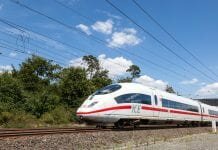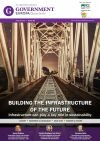
A freight train derailment near Birmingham, UK, has emphasised the need for greater safety protocols and smarter transport solutions.
The freight train derailment occurred near Whitacre Junction, between Nuneaton and Coleshill, Warwickshire, where several carriages left the tracks and tipped onto their sides. The incident happened while the train was travelling at a low speed, according to reports from the British Transport Police, and no one was injured during the derailment.
Nevertheless, the tracks were buckled by the incident, necessitating repairs, and a key route between Nuneaton and Birmingham International railway station was blocked at one of the busiest times of day for rail commuters. This disrupted journeys by rail operators London Northwestern and Cross Country, while National Rail organised replacement buses to help commuters continue their journeys along the blocked route.
What did officials report about the incident?
A spokesperson for British Transport Police emphasised that there were no injuries caused by the incident. While police and other authorities worked as quickly as possible to right the train and repair, inconvenience for passengers was the primary negative outcome of the incident.
The spokesperson said: “At 3.05pm today, officers from British Transport Police were called to the railway close to Whitacre Junction in the West Midlands following a report of a train derailment. A number of wagons on a freight train service overturned at low speed and blocked the running of the line. Police are on scene alongside colleagues from the West Midlands Fire &Rescue Service, fortunately, there are no reported injuries at this stage.”
How could smart solutions prevent problems like this?
While it is unclear what cause the freight train to derail in this particular instance, the use of artificial intelligence solutions to predict faults in trains is currently under development, and could revolutionise the ability of train engineers to respond to faults which can cause derailments.


















